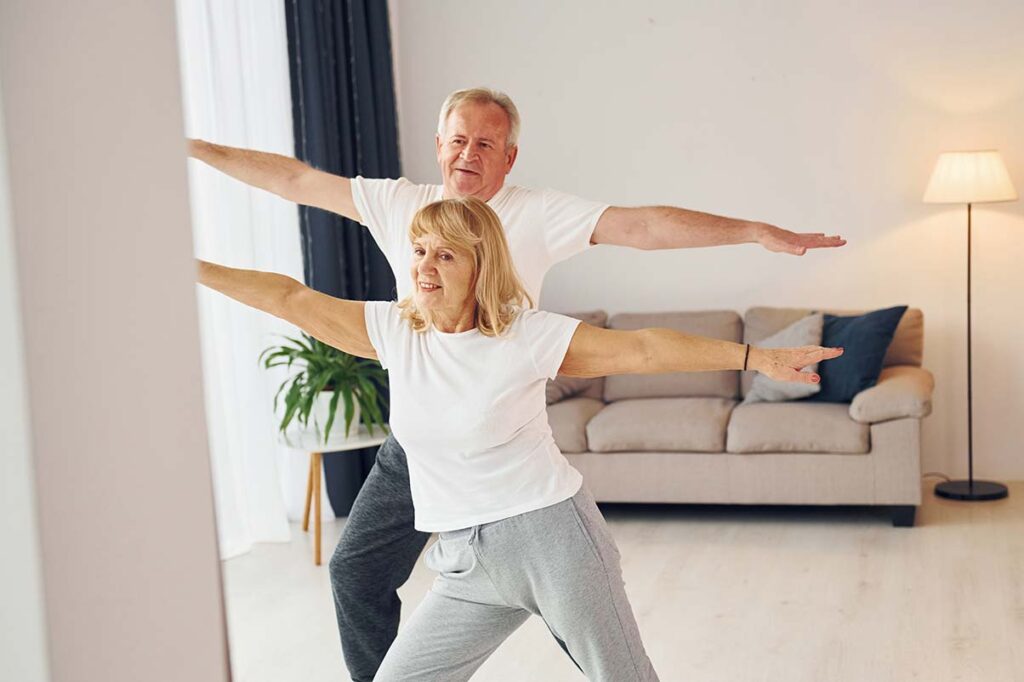 When we go for a walk, jog/run, or a ride, we increase our heart rate, blood pressure, and breathing rate. The more we move and be active, the more efficient our bodies become, able to do more and go longer before we get tired. A good way to get more in shape is to first determine your time goal. It is not important how fast you go, as long as you get to the goal. Once you are able to go for the determined amount of time, then you can start to increase your speed for that amount of time. As you get faster, going farther, longer, you can start to work the distance and speed each workout. If you want to go for more distance you would go a little slower. But if you want to go faster, you would adjust the distance to be a little shorter. You can self-monitor your intensity by a few methods.
When we go for a walk, jog/run, or a ride, we increase our heart rate, blood pressure, and breathing rate. The more we move and be active, the more efficient our bodies become, able to do more and go longer before we get tired. A good way to get more in shape is to first determine your time goal. It is not important how fast you go, as long as you get to the goal. Once you are able to go for the determined amount of time, then you can start to increase your speed for that amount of time. As you get faster, going farther, longer, you can start to work the distance and speed each workout. If you want to go for more distance you would go a little slower. But if you want to go faster, you would adjust the distance to be a little shorter. You can self-monitor your intensity by a few methods.
The first method you can go by your perceived rate of exertion, “PRE”. If you can carry on a long conversation in detail then you are probably at a 1-2-3 out
of 10. If you use shorter sentences and take bigger breaths, then you might be around 4-5-6 out of 10. If you start to say two to three word statements and breath deep and heavy, you might be around 7-8 out of 10.
The second method is by your heart rate. Most people want to train at 60-80 percent of their maximal heart rate to get the most out of a workout. To determine your heart rate range, you would subtract your age from 220, then multiply it by the percentage you want as your goal. It is good to know your resting heart rate to make sure you challenge the heart rate enough to get better heart and lung fitness for your time. The following is an example for a 25 year old person with a resting heart rate of 65 beats/minute, wanting to work out at 60-80% of their heart maximum rate:
- 220 (maximal beats/minute) – 25 (Age) = 195 maximal beats/minute
- 195 – 65 (Resting Heart rate) = 130
- 130 x .60 (Minimal Intensity) + 65 (Resting Heart Rate) = 143 beats per minute
- 130 x .80 (Maximal Intensity) + 65 (Resting Heart Rate) = 169 beats per minute
The Third method is to go by how you feel overall. It is up to you to pick a walking speed on a level treadmill, or light pedal speed on an exercise bike at a low program intensity, and get started. Walk or pedal gently for as long as you feel you can until you feel weak, tighter, or uncomfortable. You want to note the time passed when you stop. The following workouts you want to meet or beat the time or distance that you went before you stop.
When you work out with weights, stretches, or cardio vascular programs, there are a lot of changes that have to come together to become stronger, faster, more flexible, and healthier. The first is that your body has to re-organize itself. The way it does this is by “re-organizing” the number and type of nerves and muscles required to do a motion or activity. When you first start a new motion or activity, it can feel awkward and uncontrolled. This is because your body is not sure of the motion, and uses too many of everything to do it. Over time your body starts to realize who needs to fire and activate and when, at what time, and what intensity. Before you know it you feel stronger (although really just more efficient) in the motion and can do more repetitions, sets, or walk farther, smoothly.
The second thing that happens is that your heart and lungs get challenged. As you start to use more movement, you require more blood to your moving body. This increased need for circulation increases the amount of capillaries opened into the muscles and makes them more efficient. More blood vessels requires more blood to be moved and your heart can actually increase the amount of blood moved each time it pumps and squeezes. More muscles, blood vessels all require more oxygen, which activates your lungs to expand and open the lower lobes.
At the end of your workout another things happens. Your body releases endorphins, enkephalins, and serotonin. The endorphins and enkephalins are what gives you the “runner’s high” and boost in mood and energy when you are finished. Also the serotonin is a neurotransmitter that not only helps increase mood and decrease pain but helps to regulate appetite, sleep, general brain functions including memory and learning. Feeling better is the end goal for exercise for anyone. This can be for runners, weightlifters, walkers, or any other activity group. It is also the goal for those with chronic pain conditions. Realizing that the time, effort, and discomfort is worth the effort, can help motivate you to do more and go farther. By making small gradual gains over longer periods of time with small goals along the way, can help you to have a more healthy, active, quality of life.



